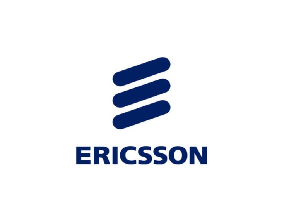Huawei defies US to grow market share as RAN decline ends – Omdia
When Donald Trump last occupied the most powerful job in the world, his administration thought unplugging Huawei from US-made chips would cause the huge Chinese equipment maker to slowly power down like a knock-off smartphone with a bad battery. Confounding those plans, Huawei recently boasted a 22% increase in sales last year, to 860 billion Chinese yuan (US$118.6 billion), and it looks in better shape than its ailing western rivals. Its share of the planet's 5G networks appears to have grown, too.
That's one of the headline conclusions of the latest research from Omdia, a Light Reading sister company. Thanks to its enormous domestic market, where Ericsson and Nokia have been left with the merest scraps, Huawei remained the world's biggest vendor of radio access network (RAN) products, a market worth about $35 billion last year, according to Omdia. In 2023, the Chinese company had a 31.3% share of the global market. Last year, it was up by an unspecified amount due, said Remy Pascal, a principal analyst with Omdia, to "a more favorable regional mix as well as market share gains in emerging markets."
The other big takeaway, which will come as some relief to the vendors active in this market, is that the lurching drops appear to be over. RAN product sales have tumbled by about $5 billion in each of the last two years, prompting industry-wide layoffs outside China. Including contractors, Ericsson cut 9,400 jobs last year, revealed CEO Börje Ekholm last month. Yet to provide full details of current headcount, Nokia had eliminated about 6,000 roles between September 2023 and July 2024. Soon-to-depart CEO Pekka Lundmark previously revealed that most of the cuts up to then had happened at the mobile networks business group.
Slightly rising
Omdia's forecast, however, is that sales will be "essentially flat" this year and marked by "low single digit percentage growth" outside China. There is an expectation that big US telcos will resume RAN spending, previously cut while they digested inventory built up after the pandemic. Verizon plans to invest between $17.5 billion and $18.5 billion in capital expenditure this year, having spent just $17.1 billion last year. T-Mobile is guiding for an outlay of $9.5 billion, about $700 million more than it spent in 2024. AT&T, though, is guiding for $22 billion, down slightly from $22.1 billion last year, despite being in the middle of a big swap from Nokia to Ericsson across one-third of sites.
Pascal says he is also anticipating a "positive trajectory" in emerging Asian markets as well as Africa, the middle East and Latin America. The omission of Europe from this batch of regions where some growth is expected will undoubtedly generate the usual concerns about Europe and how it risks falling behind other parts of the world in the connectivity game.
Besides the outlook, what's different from last year's RAN update by Omdia is evidence of a slight dip in the aggregate market share of the top five players – Huawei, Ericsson, Nokia, ZTE and Samsung. In 2023, Omdia had put that figure at about 95%. For last year, it was roughly 94%. Are the challengers linked to the concept of open RAN, which allows different suppliers to be combined at the same mobile site, finally making some progress?
If they are, it is not substantial. Besides Huawei, Omdia reckons Ericsson was one of the main gainers last year as it grew its share of the AT&T footprint, booting Nokia out of RAN sites. The Finnish vendor would admit to losing market share in the US but also claims that its global footprint grew by 18,000 sites last year, meaning it won more than it lost. The other big winner cited by Omdia – and the only supplier it names outside the top five – is Tejas Networks, an Indian vendor that landed a juicy contract with state-owned BSNL in a sign of government preference for local expertise.
Omdia had nothing specific to say about Samsung, the South Korean vendor that seems to have emerged as the default third option for telcos in countries where Chinese companies face bans. Yet Samsung clearly had a bad 2024, with RAN sales down a quarter. It previously suffered setbacks in India, where leading operator Reliance Jio, having depended exclusively on Samsung in 4G, switched to Ericsson and Nokia in 5G. When Omdia did its number crunching around this time last year, Samsung's market share had fallen from 7.6% in 2022 to 6.1% in 2023, analysts reckoned.
Among other things, the Omdia data seems further to highlight the futility of US sanctions against Huawei originally imposed by Trump and then expanded by Joe Biden. China still lacks the ability to make the most advanced chips featuring the tiniest transistors. But technical workarounds or loopholes in trade rules have enabled Huawei to revive its smartphone business and remain competitive in networks. Late last year, telco executives who spoke on condition of anonymity said there had been no discernible impact on the quality of its products. And Ericsson continues to regard Huawei as its chief rival.
The industry is still waiting to see what Trump 2.0 might do about Huawei's recent growth and continued presence in major European markets, including Germany. In the last month, Trump has been a far more bullying and pugilistic president than he was the first time round, threatening tariffs whenever it seems he might not get his way. Then again, with geopolitical concerns about artificial intelligence now substituting for earlier worries about 5G, a maker of telecom networks might not be foremost in Trump's mind.





